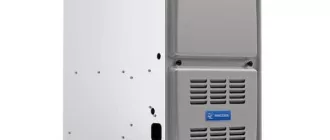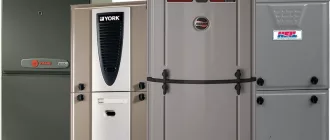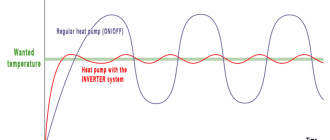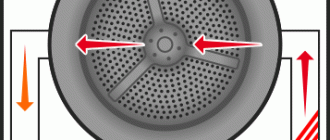
Leveraging Money-Saving AC Features to Maximize Cost-Effectiveness: Make an Informed and Budget-Friendly Choice
Choosing the right air conditioning system for your home or office can make a significant difference in your energy bills. With the rising cost of electricity, it’s essential to consider money-saving AC features to make a cost-effective choice. Investing in an energy-efficient air conditioner not only helps you save money but also reduces your carbon footprint.
One of the key features to look for in an AC unit is its energy efficiency rating. AC units with higher SEER (Seasonal Energy Efficiency Ratio) ratings are more energy-efficient and can save you a substantial amount of money on your monthly energy bills. Additionally, look for AC units with programmable thermostats, which allow you to set specific temperatures for different times of the day, ensuring your AC only cools when necessary.
Another important money-saving feature to consider is a variable speed compressor. Unlike traditional AC units that operate at a fixed speed, units with variable speed compressors can adjust the cooling output based on your cooling needs. This not only saves energy but also provides a more consistent and comfortable indoor temperature.
Furthermore, choosing an AC unit with smart technology features can help you save even more money. Smart AC systems can be controlled remotely through smartphone applications, allowing you to adjust the temperature and schedule cooling cycles from anywhere, ensuring that you only cool your space when needed. Some smart AC units can even learn your preferences and automatically adjust the cooling settings for optimal energy savings.
In conclusion, when choosing an air conditioning system, it’s important to consider the money-saving features it offers. An energy-efficient AC unit with programmable thermostats, a variable speed compressor, and smart technology can make a significant difference in your energy bills while providing a comfortable indoor environment. By making a cost-effective choice, you can save money and contribute to a sustainable future.
Energy-Efficient Cooling
In the search for cost-effective AC options, energy efficiency should be a top priority. When looking for an AC unit, it’s important to consider features that can help save money on energy bills. Energy-efficient cooling systems utilize advanced technologies that reduce energy consumption without compromising on performance.
One key feature to look for is a programmable thermostat. This allows you to set specific temperature levels for different times of the day, ensuring that your AC is only running when necessary. By using a programmable thermostat, you can save energy and money by avoiding unnecessary cooling when no one is at home.
Another important feature is a high-efficiency rating. AC units with a high SEER (Seasonal Energy Efficiency Ratio) rating are more efficient and can save significant amounts of money over time compared to units with lower ratings. Investing in a higher-rated AC unit may require upfront costs, but the long-term savings can be substantial.
Additionally, consider features such as energy-saving modes, smart sensors, and variable-speed technology. Energy-saving modes allow the AC unit to adjust its settings to conserve energy when the room reaches the desired temperature. Smart sensors can detect when there is no one in the room and automatically adjust the cooling accordingly. Variable-speed technology adjusts the power of the AC unit based on the cooling needs, ensuring optimal energy usage.
By choosing an AC unit with energy-efficient features, you can make a cost-effective choice that not only saves you money but also helps reduce your carbon footprint. Prioritizing energy efficiency can lead to long-term savings and a more sustainable cooling solution.
Smart Thermostat Integration
One of the key features that can greatly contribute to saving money and making your AC system more cost-effective is smart thermostat integration. With this feature, you can control and program your air conditioner from anywhere using a smartphone or other smart devices.
Smart thermostat integration allows you to adjust the temperature settings based on your preferences and schedule. You can easily set your AC to turn off or reduce the cooling during periods when you are not at home or during the night when you are sleeping. This can help eliminate unnecessary energy usage and ultimately save you money on your monthly utility bills.
Another benefit of smart thermostat integration is that it can provide you with insights and data about your energy usage. You can track your AC’s energy consumption and make informed decisions on how to optimize your cooling settings to further save money.
Additionally, some smart thermostats can even adapt to your lifestyle and learn your preferences over time. They can automatically adjust the temperature based on your habits and optimize energy usage accordingly.
By integrating a smart thermostat into your AC system, you can take advantage of these money-saving features and make your cooling system more cost-effective. It provides convenience, control, and the ability to reduce energy consumption, ultimately saving you money in the long run.
Programmable Temperature Settings
One of the cost-effective features of modern AC units is programmable temperature settings. With this feature, you have the control to set different temperatures for different times of the day or week, allowing you to save money on your energy bills.
By programming your AC to automatically adjust the temperature when you’re away or asleep, you can avoid wasting energy cooling an empty house or maintaining a lower temperature while you’re not in the room. For example, you can set the AC to turn off or increase the temperature when you’re at work and then lower it just before you get home, ensuring you come back to a comfortable environment without unnecessary energy consumption.
Another benefit of programmable temperature settings is the ability to create personalized schedules based on your daily routine. Whether you prefer it cooler at night for better sleep or warmer in the mornings, you can easily program your AC to match your preferences without manually adjusting the temperature every time. This not only saves you time but also ensures optimal comfort and energy efficiency.
The choice to invest in an AC with programmable temperature settings is a wise one for those looking to save money in the long run. By taking advantage of this feature, you can reduce your energy consumption and lower your monthly bills. So when choosing an AC, make sure to consider this cost-effective feature to make the most out of your money.
High SEER Rating
When choosing an AC for your home, it’s important to consider its SEER rating. SEER stands for Seasonal Energy Efficiency Ratio and it measures the air conditioner’s energy efficiency over a cooling season. A higher SEER rating means a more energy-efficient AC unit, which can translate into significant savings on your utility bills.
Opting for an AC with a high SEER rating is a smart money-saving choice. While the upfront cost of such units might be higher, the long-term savings they provide can outweigh the initial investment. AC units with high SEER ratings tend to be equipped with advanced features that optimize energy consumption.
One such feature is variable speed technology, which allows the AC to adjust its speed and output according to the cooling needs of your home. This not only helps maintain a comfortable indoor temperature but also minimizes energy waste. AC units with high SEER ratings also often come with smart programmable thermostats, allowing you to schedule temperature adjustments based on your usage patterns.
By choosing an AC with a high SEER rating, you can make a cost-effective choice that benefits both your wallet and the environment. Not only will you save money on energy bills, but you’ll also reduce your carbon footprint by minimizing energy consumption. So, when it comes to selecting an AC, don’t forget to consider the SEER rating and take advantage of the money-saving features it offers.
Variable Speed Technology
One of the key features to consider when looking for a money-saving and cost-effective AC unit is variable speed technology. This innovative technology allows the AC unit to adjust its speed based on the cooling needs of your home, making it the ideal choice for energy efficiency and savings on your electricity bill.
With variable speed technology, the AC unit can operate at different speeds, rather than running at full capacity all the time. This means that the unit can run at a lower speed when the cooling demand is low, and only increase to higher speeds when needed. By adjusting the speed, the AC unit can maintain a consistent temperature in your home without wasting energy.
Variable speed technology not only helps to save money on your energy bills, but it also provides a number of other benefits. By running at lower speeds, the AC unit operates more quietly, creating a more comfortable and peaceful environment in your home. Additionally, the unit experiences less wear and tear, resulting in a longer lifespan and lower maintenance costs.
When choosing an AC unit with variable speed technology, make sure to look for models that have high SEER ratings. SEER stands for Seasonal Energy Efficiency Ratio and indicates the energy efficiency of the unit. The higher the SEER rating, the more energy-efficient the unit is, which means greater savings on your energy bills.
In conclusion, variable speed technology is a cost-effective choice for those looking to save money on their AC expenses. By adjusting the speed based on cooling needs, these units provide optimal energy efficiency and can significantly reduce your electricity bills. Consider investing in an AC unit with variable speed technology to benefit from its money-saving features and enjoy a comfortable home environment.
Zoning Capabilities
Zoning capabilities is one of the key features that can make your AC choice more cost-effective and energy-saving. With zoning capabilities, you have the option to control the temperature in different areas of your home or office separately.
This allows you to only cool the rooms that are being used, saving you money on energy costs. For example, if you’re spending most of your time in the living room, you can set the AC to cool that area while keeping the bedrooms or other areas at a higher temperature.
Zoning capabilities also allow you to customize the temperature settings based on individual preferences. This means that each person can enjoy the desired level of comfort in their own room, without affecting others. It reduces conflicts over temperature and ensures a comfortable environment for everyone.
Another advantage of zoning capabilities is the ability to prioritize certain areas. For example, if you have a home office or a nursery, you can give these areas priority and ensure they are always at the desired temperature.
Overall, zoning capabilities offer a cost-effective choice for AC systems by allowing you to optimize energy usage and only cool the areas that are in use. It provides individual comfort control and helps create a harmonious environment in your home or office.
Air Purification System
An air purification system is a valuable feature to consider when choosing an AC unit. Not only does it improve the overall indoor air quality, but it can also save you money in the long run.
By eliminating airborne contaminants such as dust, pollen, and pet dander, an air purifier helps to create a healthier living environment. This is particularly beneficial for individuals who suffer from allergies or asthma, as it can significantly reduce their symptoms.
Furthermore, an air purification system can help to extend the lifespan of your AC unit. By preventing the buildup of dirt and debris in the system, it reduces the strain on the unit and improves its overall efficiency. This can lead to energy savings and lower maintenance costs.
Investing in an AC unit with an integrated air purification system is a smart financial choice. While it may have a slightly higher upfront cost, the long-term money-saving benefits make it a cost-effective option.
- Improves indoor air quality
- Reduces allergies and asthma symptoms
- Extends the lifespan of the AC unit
- Increases energy efficiency
- Reduces maintenance costs
Overall, an air purification system is a valuable feature to look for when choosing an AC unit. It not only enhances your indoor comfort and health but also offers long-term money-saving benefits. Consider investing in an AC with this feature to make a cost-effective choice.
Seasonal Energy Efficiency Ratio (SEER)
When choosing an AC unit, one of the most important features to consider is the Seasonal Energy Efficiency Ratio (SEER). The SEER rating is a measure of the cooling efficiency of the AC system and plays a crucial role in determining its energy consumption and cost savings.
In simple terms, the SEER rating indicates how much cooling output the AC unit can provide for each unit of energy it consumes. The higher the SEER rating, the more efficient the system is in converting energy into cool air. This means that AC units with higher SEER ratings require less energy to cool a given space, resulting in significant cost savings over time.
By choosing an AC unit with a high SEER rating, you can save money on your cooling costs in the long run. Even though AC units with higher SEER ratings may have a higher upfront cost, the energy savings they provide can quickly offset this initial investment.
The US Department of Energy sets minimum SEER ratings for residential AC units, and it is recommended to choose a unit with a SEER rating above this minimum requirement. Higher SEER ratings not only save money, but they also have a smaller environmental impact by reducing greenhouse gas emissions.
It’s important to consider other factors alongside the SEER rating when choosing an AC unit. Factors like the size of the unit, the area you need to cool, and the climate in which you live all play a role in determining the most cost-effective choice for your specific needs.
Ultimately, balancing the SEER rating with other important features can help you make a well-informed decision when selecting an AC unit. By considering the SEER rating along with factors like size, energy-saving features, and the overall cost of the unit, you can choose an AC system that not only saves money but also provides efficient and effective cooling for your space.
Heat Pump Functionality

One of the money-saving AC features available on many models is the heat pump functionality. This feature allows the air conditioner to double as a heat source during colder months, reducing the need for a separate heating system. By utilizing the heat pump, you can save money on both installation and operating costs.
A heat pump works by extracting heat from the outside air and transferring it indoors. It does this by using a refrigerant that absorbs heat from the outside and releases it inside. This process can be reversed during warmer months to provide cooling instead.
By utilizing the heat pump functionality, you can have a cost-effective heating and cooling solution all year round. With this feature, you won’t have to worry about purchasing and maintaining a separate heating system, saving you both money and space in your home.
Dehumidification Control
One of the cost-effective features to consider when purchasing an AC unit is dehumidification control. This feature allows you to remove excess moisture from the air, enhancing the overall comfort of your space while saving you money in the long run.
High humidity levels can make a room feel warm and stuffy, even if the actual temperature is moderate. By having dehumidification control on your AC unit, you can reduce the humidity levels, making the air feel cooler and more refreshing.
Furthermore, excessive humidity can lead to mold and mildew growth, which can be harmful to your health and cause damage to your property. With the dehumidification control feature, you can keep the humidity at an optimal level, significantly reducing the risk of mold and mildew formation.
The dehumidification control feature also helps in reducing energy consumption. By removing excess moisture from the air, your AC unit doesn’t have to work as hard to cool the room, resulting in lower energy bills. This feature is especially useful in areas with high humidity levels, where the AC unit would typically work harder to maintain the desired temperature.
When considering a money-saving AC choice, make sure to look for dehumidification control among the features. This cost-effective feature not only improves comfort but also helps in reducing energy consumption, making it an excellent investment in the long run.
Eco-Friendly Refrigerant
When it comes to saving money and making a cost-effective choice for your AC, one of the key features to consider is the use of an eco-friendly refrigerant. A refrigerant is a substance that is used in air conditioning systems to cool the air. Traditional refrigerants, such as chlorofluorocarbons (CFCs) and hydrochlorofluorocarbons (HCFCs), are harmful to the environment and contribute to the depletion of the ozone layer.
By choosing an AC that uses an eco-friendly refrigerant, you can make a positive impact on the environment while also reducing your energy consumption and lowering your utility bills. Eco-friendly refrigerants, such as hydrofluorocarbons (HFCs) and hydrofluoroolefins (HFOs), have a lower global warming potential and are less harmful to the ozone layer.
Not only are eco-friendly refrigerants better for the environment, but they also have the added benefit of improving the efficiency of your AC system. These refrigerants require less energy to cool the air, which means that your AC unit will consume less electricity and ultimately save you money in the long run.
When choosing an AC with an eco-friendly refrigerant, be sure to look for certifications such as ENERGY STAR. This certification ensures that the AC meets strict energy efficiency and environmental standards. By making an informed choice and opting for an AC with eco-friendly refrigerant, you can save money, reduce your environmental impact, and enjoy a more cost-effective cooling solution.
Noise Reduction Features
When considering money-saving features for an AC, it is important to also consider noise reduction features. AC units can be quite noisy, and this can be disruptive to your comfort and sleep. Luckily, many modern AC units come with noise reduction features that aim to minimize noise levels.
Some of the noise reduction features to look out for include:
– Dual Inverter Technology: This technology allows the AC unit to operate at a lower noise level by reducing the number of compressors needed to cool the air. This results in quieter operation.
– Soundproof Construction: AC units with soundproof construction are designed to minimize noise transmission. They are built with materials that absorb noise, such as insulated panels and rubber padding, ensuring a quieter operation.
– Sleep Mode: Some AC units come with a sleep mode feature, which automatically adjusts the temperature and fan speed to create a more comfortable and quieter sleeping environment.
– Low-Noise Compressors: AC units equipped with low-noise compressors operate at a lower noise level compared to traditional compressors. This helps to reduce noise pollution in your home or office.
– Fan Speed Control: AC units with fan speed control allow you to adjust the speed of the fan according to your preference. By reducing the fan speed, you can decrease the noise level while still maintaining a comfortable temperature.
By choosing an AC unit with noise reduction features, you can enjoy a quieter and more peaceful environment while also saving money on your energy bills.
Wi-Fi Connectivity
One money-saving and cost-effective feature to consider when choosing an AC unit is Wi-Fi connectivity. With Wi-Fi connectivity, you can control and monitor your AC unit remotely using your smartphone or tablet.
This feature allows you to adjust the temperature and settings of your AC even when you are not at home. So, if you realize you forgot to turn off the AC before leaving the house, you can simply use your phone to turn it off. This can help save money by ensuring that the AC is not running when it’s unnecessary.
Additionally, with Wi-Fi connectivity, you can schedule your AC to turn on or off at specific times, helping you optimize energy usage and reduce costs. For example, you can set the AC to turn on right before you arrive home, so you can come back to a cool and comfortable environment without running the AC all day.
Wi-Fi connectivity also provides you with the ability to track your AC’s energy usage, allowing you to monitor and adjust your cooling habits to be more cost-effective. By analyzing your AC’s energy consumption, you can make informed decisions to optimize energy usage and reduce your monthly bills.
In conclusion, the Wi-Fi connectivity feature in AC units provides convenience, control, and cost savings. It allows you to remotely control your AC, schedule its operation, and monitor energy usage, making it a smart choice for those looking for a cost-effective cooling solution.
Remote Access and Control
The ability to remotely access and control your AC unit can save you both time and money. With remote access, you can adjust the temperature and settings of your AC unit from anywhere, using your smartphone or computer. This allows you to turn off the AC when you’re not at home, saving energy and reducing your monthly utility bills.
Being able to control your AC unit remotely also gives you the flexibility to make adjustments based on your schedule. For example, if you know you won’t be home until late in the evening, you can use the remote access feature to turn on the AC a few hours before you arrive, ensuring that your home is cool and comfortable when you get there.
Another money-saving feature of remote access and control is the ability to set up temperature schedules. You can program your AC unit to automatically adjust the temperature at different times of the day, based on your preferences and energy-saving goals. For example, you can set the AC to turn on and cool the house down an hour before you wake up in the morning, and then turn off or reduce the cooling when you leave for work.
Overall, remote access and control features offer convenience and cost savings. By having the ability to adjust your AC unit remotely and set up temperature schedules, you can optimize energy usage and lower your monthly utility bills.
Energy-Saving Mode
One of the key money-saving features of modern AC units is the energy-saving mode. This mode is designed to optimize the cooling performance while minimizing energy consumption, ultimately reducing your electricity bills.
When you activate the energy-saving mode on your AC, the unit automatically adjusts its settings to operate more efficiently. It might increase the temperature slightly or adjust the fan speed to reduce power usage. This feature is particularly useful when you want to save money without sacrificing comfort.
By using the energy-saving mode, you can ensure that your AC is operating at its most cost-effective level. The AC will only use the energy it needs to maintain a comfortable temperature, avoiding unnecessary power consumption.
In addition to saving money, the energy-saving mode also helps to reduce your environmental impact. By using less energy, your AC unit produces fewer greenhouse gas emissions, which are a major contributor to climate change.
When purchasing a new AC unit, be sure to check if it has an energy-saving mode. This feature can make a significant difference in your energy bills over time and contribute to a more sustainable lifestyle.
Q&A:
What are some energy-saving features of air conditioners?
Some energy-saving features of air conditioners include programmable thermostats, energy-efficient cooling modes, and smart technology integration.
Can you save money by using a programmable thermostat with your AC?
Yes, using a programmable thermostat with your AC can save you money by allowing you to set specific temperature schedules and avoid unnecessary cooling when you’re away from home.
Are there any cooling modes that can help cut down on energy consumption?
Yes, there are cooling modes such as energy-saving or eco mode that can help reduce energy consumption by adjusting the temperature and fan speed to optimize efficiency.
How does smart technology integration help in saving money on AC usage?
Smart technology integration allows you to control and monitor your AC remotely, so you can adjust the settings based on your needs and avoid cooling an empty home, ultimately saving money on energy bills.
Can upgrading to an energy-efficient AC unit save you money in the long run?
Yes, upgrading to an energy-efficient AC unit can save you money in the long run due to its higher efficiency and reduced energy consumption, resulting in lower energy bills.
Does using a programmable thermostat really help save money?
Yes, using a programmable thermostat can help save money on your cooling costs. You can program the thermostat to adjust the temperature based on when you are home or away, which can help reduce energy usage and lower your electricity bills.
Are energy-efficient AC units more expensive to purchase?
Energy-efficient AC units may have a slightly higher upfront cost compared to traditional units, but they can save you money in the long run. These units consume less electricity, resulting in lower energy bills over time. So, while they may be a bit more expensive initially, they are a cost-effective choice in the long term.






